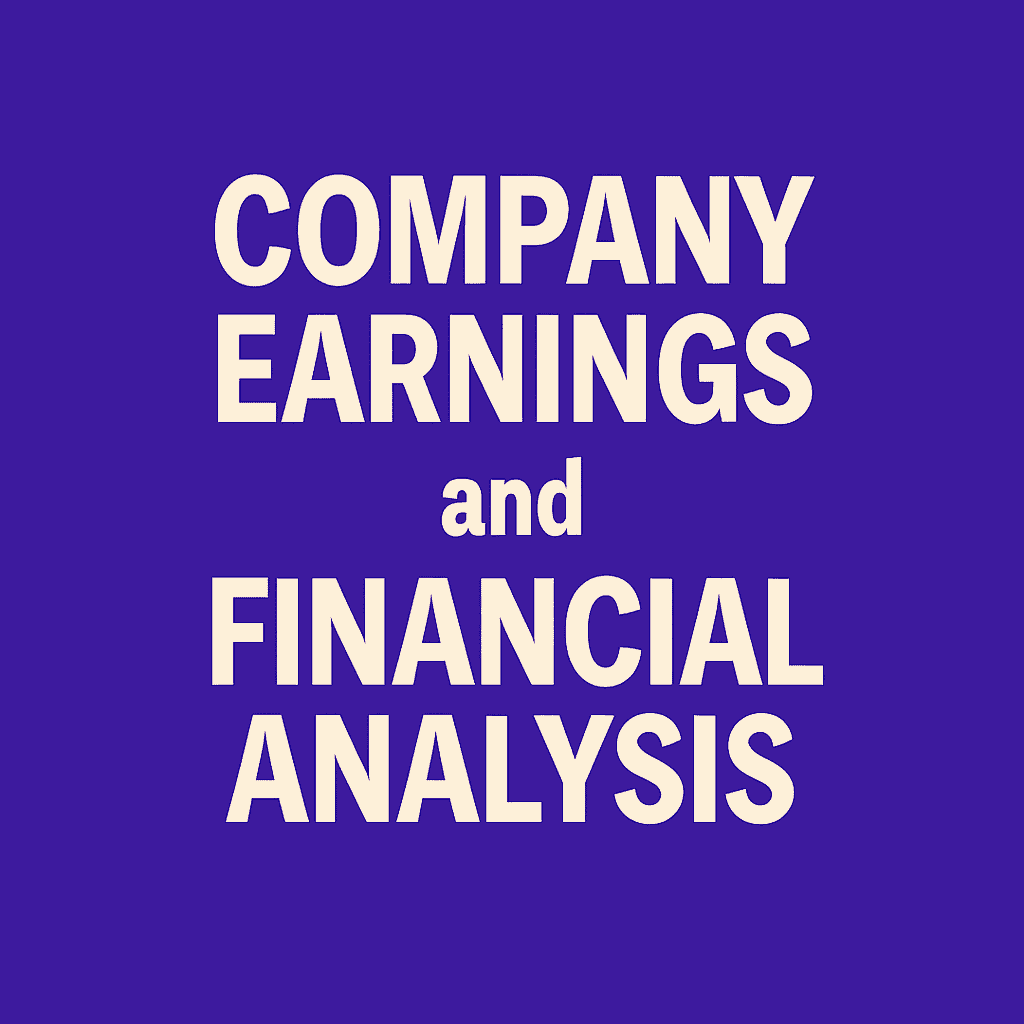Tesla, Inc. (NASDAQ: TSLA)
Q2 2025 Financial Analysis | July 24, 2025
Executive Summary
Tesla reported Q2 2025 as “a seminal point in Tesla’s history” marking the beginning of the company’s transition from leading the electric vehicle and renewable energy industries to also becoming a leader in AI, robotics and related services. Revenue decreased 12% year-over-year to $22.5 billion, while the company launched its first Robotaxi service in Austin and achieved the world’s first autonomous vehicle delivery. Despite revenue headwinds, Tesla maintained strong profitability with $1.2 billion in GAAP net income and $2.5 billion in operating cash flow.
Q2 2025 Highlights
Financial Performance
Tesla’s Q2 2025 financial performance reflected a challenging environment with total revenue declining 12% year-over-year to $22.5 billion. The decline was primarily driven by lower vehicle deliveries, reduced regulatory credit revenue, and lower average selling prices due to product mix changes. Automotive revenue, which represents the majority of Tesla’s business, decreased 16% to $16.7 billion.
Operating income decreased significantly by 42% to $923 million, resulting in an operating margin of 4.1% compared to 6.3% in the prior year. The decline was primarily attributed to lower regulatory credit revenue, increased operating expenses driven by AI and R&D projects, and higher stock-based compensation costs.
Despite revenue headwinds, Tesla maintained strong cash generation with operating cash flow of $2.5 billion. However, free cash flow declined dramatically to $146 million from $1.34 billion in the prior year, primarily due to increased capital expenditures of $2.4 billion as the company invests heavily in AI infrastructure and manufacturing capacity.
The company’s gross margin improved slightly to 17.2% from 16.3% in Q1 2025, driven by lower cost per vehicle due to mix changes and reduced raw material costs, partially offset by lower fixed cost absorption due to reduced production volumes.
Operational Performance
| Metric | Q2 2025 | Q2 2024 | YoY Change | Sequential Change |
|---|---|---|---|---|
| Total Vehicle Deliveries | 384,122 | 443,956 | -13% | +14% |
| Model 3/Y Deliveries | 373,728 | 422,405 | -12% | +15% |
| Other Models Deliveries | 10,394 | 21,551 | -52% | -19% |
| Energy Storage Deployed (GWh) | 9.6 | 9.4 | +2% | -8% |
| Supercharger Stations | 7,377 | 6,473 | +14% | +3% |
Vehicle Deliveries totaled 384,122 units in Q2 2025, down 13% year-over-year but up 14% sequentially from Q1 2025. Model 3/Y deliveries represented the vast majority at 373,728 units, while deliveries of other models (Model S/X and Cybertruck) declined significantly to 10,394 units, reflecting the company’s focus on higher-volume, more affordable models.
Energy Storage Business deployed 9.6 GWh in Q2 2025, showing slight growth of 2% year-over-year. The energy business achieved record gross profit, benefiting from the deployment of first Megapacks from the new Shanghai Megafactory, which helps regionalize production and meet growing global demand.
Supercharging Network continued its robust expansion with 7,377 stations globally, representing 14% growth year-over-year. The network added over 2,900 net new charging stalls during the quarter, supporting Tesla’s growing vehicle fleet and third-party access agreements.
Global vehicle inventory reached 24 days of supply, up from 18 days in Q2 2024, indicating some softening in demand relative to production capacity. However, this provides flexibility for Tesla to manage deliveries and reduce shipping costs.
Strategic Milestones & AI Development
Q2 2025 marked several transformational milestones for Tesla as it expands beyond traditional automotive into AI and robotics:
Robotaxi Service Launch
- Austin Launch: Tesla launched its first Robotaxi service in Austin in June with a safety rider, marking the beginning of the company’s transition to autonomous ride-hailing services
- Autonomous Delivery: Achieved the world’s first autonomous delivery of a customer vehicle, with a Model Y driving itself approximately 30 minutes from the factory to the customer’s home
- Scalable Architecture: Tesla’s camera-only architecture with neural networks trained on global fleet data enables rapid scaling and continuous safety improvements
AI Infrastructure Expansion
- Compute Capacity: Expanded AI training compute with additional 16k H200 GPUs at Gigafactory Texas, bringing Cortex to 67k H100 equivalents
- FSD Progress: Cumulative miles driven with FSD (Supervised) reached approximately 4.5 billion, with significant progress on V12 and beyond
- Global Testing: Continued FSD testing in international markets including Paris, London, Sydney, and Rome, preparing for broader release pending regulatory approvals
Product Development
- Affordable Models: Completed first builds of more affordable models in June, with volume production planned for the second half of 2025
- Cybercab: Purpose-built Robotaxi product using revolutionary “unboxed” manufacturing strategy, scheduled for volume production in 2026
- Tesla Semi: Continued development with volume production also targeted for 2026
Customer Experience Innovation
- Tesla Diner: Opened innovative charging, dining, and entertainment destination with car-side food delivery
- Supercharger Expansion: Progress on world’s largest Supercharger site in Lost Hills, CA with 168 stalls powered by solar and Megapack
- AI Customer Service: Integrated AI agents to resolve customer queries and reduce service wait times
Energy Business Performance
Tesla’s Energy business achieved several significant milestones in Q2 2025, demonstrating the critical role of energy storage in supporting AI development and grid modernization:
- Record Deployments: Energy storage deployments achieved their 12th consecutive quarterly record on a trailing twelve-month basis
- Shanghai Megafactory: Deployed first Megapacks from Megafactory Shanghai, enabling regionalized production to meet global demand
- Record Gross Profit: Energy generation and storage gross profit reached a record $846 million
- Powerwall Growth: Record Powerwall deployments for the fifth consecutive quarter
The Energy business is positioned as “more critical than ever” as electricity demand grows with AI development. Tesla’s Megapack product helps increase utilization of existing generation and transmission capacity, making the electric grid more efficient. When paired with solar PV, Megapack is cost competitive with traditional fossil fuel generation and can be deployed 4x faster than traditional plants.
Regionalizing energy storage manufacturing through facilities like the Shanghai Megafactory is critical for meeting demand given shifting tariff, trade, and fiscal policies globally. This strategy helps Tesla maintain cost competitiveness while serving local markets more effectively.
Manufacturing & Production Updates
| Facility | Models | Capacity | Status |
|---|---|---|---|
| California (Fremont) | Model S/X, Model 3/Y | 100k / >550k | Production |
| Shanghai | Model 3/Y | >950k | Production |
| Berlin-Brandenburg | Model Y | >375k | Production |
| Texas (Austin) | Model Y, Cybertruck | >250k, >125k | Production |
| Texas (Austin) | Cybercab | – | Construction |
| Nevada | Tesla Semi | – | Construction |
Tesla achieved several manufacturing milestones in Q2 2025:
- 8 Millionth Vehicle: Produced the 8-millionth vehicle in June at Gigafactory Berlin-Brandenburg, demonstrating the scale of Tesla’s manufacturing operations
- Supply Chain Resilience: Maintained robust vehicle production capacity despite trade and policy uncertainties through ongoing focus on supply chain diversification
- Factory Efficiency: Continued to optimize production processes and reduce manufacturing costs across all facilities
Regional performance highlights include:
- North America: Record test drives, up 20% sequentially, driven by product portfolio refreshes and FSD improvements
- Asia-Pacific: Record delivery volumes in South Korea, Malaysia, Philippines, and Singapore; launched Model Y in India
- Europe: Model Y was the best-selling vehicle in Norway YTD and leading vehicle in several European markets in June
Tesla’s lithium refining and cathode production plants remain on track to begin production in 2025, enabling on-shoring of critical battery materials to the U.S. The company is also on course to begin domestic production of LFP cells for energy storage products later in 2025.
Financial Position & Outlook
Tesla maintains a strong financial position with significant flexibility for continued investment in growth initiatives:
Balance Sheet Strength
- Cash Position: $36.8 billion in cash, cash equivalents, and investments as of Q2 2025
- Debt Management: Low debt levels with primarily non-recourse debt of $7.0 billion
- Working Capital: Efficient working capital management with 15 days sales outstanding and 65 days payable outstanding
Capital Allocation Strategy
- Growth Investments: Capital expenditures of $2.4 billion in Q2 2025, focused on AI infrastructure, manufacturing capacity, and new product development
- R&D Focus: Research and development expenses increased to $1.6 billion, driven by AI and autonomy projects
- Operational Efficiency: Continued focus on reducing manufacturing costs and improving operational leverage
Strategic Outlook
Management emphasized several key priorities for the remainder of 2025 and beyond:
- Delivering affordable and compelling autonomy-capable models to maximize the global vehicle fleet
- Rapidly advancing autonomy software development and scaling the Robotaxi service
- Growing the Energy business to support increasing electricity demand from AI applications
- Advancing robotics efforts and expanding beyond traditional automotive
Despite macroeconomic uncertainties from shifting tariffs and policy changes, Tesla remains committed to high-value investments in CapEx and R&D while maintaining a strong balance sheet. The company’s focus on prudent capital allocation positions it well for long-term growth across automotive, energy, and AI/robotics segments.
Risks & Opportunities
Opportunities
Risks
Conclusion
Strengths
- Successful launch of Robotaxi service marking AI transition
- Strong cash position of $36.8 billion providing investment flexibility
- Record energy storage business with expanding global footprint
- Continued supercharging network expansion and infrastructure development
- Progress on affordable vehicle models and advanced manufacturing
Areas to Monitor
- Vehicle delivery volume pressure affecting automotive revenue
- Compressed operating margins from increased R&D investments
- Regulatory approval timeline for autonomous services expansion
- Competitive pressure in EV market affecting pricing power
- Execution of ambitious product timeline for 2025-2026
Summary
Tesla’s Q2 2025 results represent a pivotal moment in the company’s evolution from an electric vehicle manufacturer to a comprehensive AI, robotics, and sustainable energy company. While traditional automotive metrics showed pressure with revenue declining 12% to $22.5 billion and vehicle deliveries down 13%, the quarter’s significance lies in the successful launch of the Robotaxi service in Austin and achievement of the world’s first autonomous vehicle delivery.
The company’s strategic investments in AI infrastructure, with training capacity reaching 67k H100 equivalents, position Tesla uniquely in the autonomous vehicle market. The camera-only architecture trained on data from millions of vehicles provides a scalable foundation for rapid expansion of autonomous services. Meanwhile, the Energy business achieved record performance, addressing the critical need for grid storage as AI drives electricity demand growth.
Despite near-term automotive headwinds, Tesla’s strong balance sheet with $36.8 billion in cash provides substantial flexibility to execute on its ambitious roadmap. The company’s focus on affordable vehicle models, energy storage expansion, and breakthrough autonomous technologies creates multiple avenues for long-term value creation. As Tesla transitions from a car company to an AI and robotics leader, Q2 2025 marks the beginning of what management describes as a new chapter in the company’s 70-year mission to accelerate sustainable transport and energy.
Source: Tesla Q2 2025 Update


